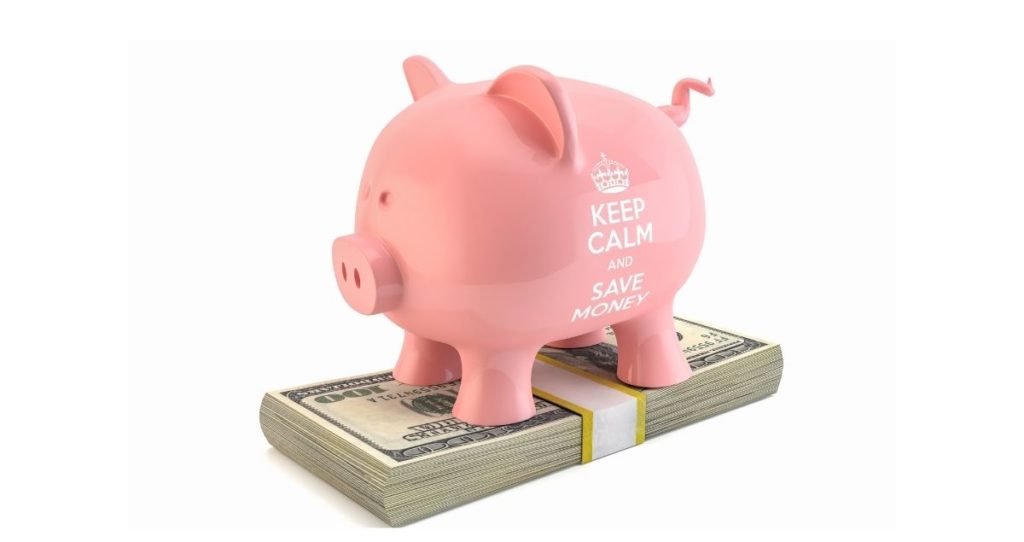Having a savings account is one of the best strategies to manage your finances. The account will allow you to save money for short-term and long-term financial goals and prevent you from spending every penny you make. Additionally, a savings account will earn you interest known as annual percentage yield(APY) which is essential in building wealth and reaching your financial goals faster.
Unlike a checking account that is designed specifically for spending, the purpose of a savings account is to save money. If you are getting started with your savings journey, this article will guide you through details of what a savings account is, its benefits and drawbacks, and how you can utilize it to meet your financial needs.
What is a savings account?
A savings account is a deposit account you can open from a bank, credit union, or similar financial institution. Savings accounts are great for storing money intended for short-term goals such as emergency funds or a car down payment. The Federal Deposit Insurance Corporation(FDIC) insures savings accounts up to $250,000 per account which makes these financial products risk-free.
The biggest drawback of a savings account is that it earns you a much lower interest rate compared to other deposit accounts such as money market accounts(MMA) and certificates of deposit(CDs). The interest on savings accounts is variable-meaning it will change due to market rates. Online banks and credit unions offer higher-yield savings accounts which come with rates that are as much as 10 times what you get from traditional savings accounts.
Most savings accounts allow you to make deposits and a limited number of withdrawals usually up to six times in a month.
What are the alternatives to a savings account?
Given the low interest rates of savings accounts, you may be wondering if there are alternatives to them. The answer is yes. There are better options with relatively higher interest than savings accounts which also come with the same level of security of your funds.
The following are a few alternatives to savings accounts.
- Certificates of deposits (CD). These are accounts offered by banks credit unions or other investment firms where you lock your money in the account for a fixed time until maturity. After the maturity date, you can either take your money out or renew your CD. As of September 2023, the national average rate for the 12-month CD is 1.76% according to FDIC.
- Cash management accounts. Cash management accounts are similar to savings and checking accounts. However, they are offered by nonbank firms. In other words, they are provided by institutions other than banks. Some of these institutions offer better rates compared to savings and checking account rates.
- Money market account(MMA). These accounts are offered by banks and credit unions. Just like savings accounts, MMAs are insured by FDIC but they come with relatively better rates. However, you cannot withdraw or deposit in the account more than six times, according to the Consumer Financial Protection Bureau(CFPB).
Benefits of savings accounts
- You will take advantage of a small interest which is better than having the money in a checking account where you earn no money.
- The lack of direct access prevents you from similar overspending activities associated with checking accounts
- The savings account gives you a chance to save money for something you want to do in the future such as buying a car, a house, or paying for college.
- It is easy to set up a savings account. Many banks and institutions firms give you the option to have both accounts (savings and checking) together where you can easily transfer money from one account to another.
- Your savings account will be insured for up to $250,000 per depositor from a bank failure, according to the Federal Deposit Insurance Corporation (FDIC).
- Savings accounts are great for holding your emergency funds.
Disadvantages of savings accounts
- Savings accounts do not provide enough interest for your investment. According to FDIC, the national average interest for savings accounts is 0.43%. This rate is too low compared to what you can get from a Certificate of Deposits (CD) which stands at 1.76% for a 12-month CD or 0.62% for MMAs, according to FDIC. In addition, this return is nothing compared to the inflation rate which stands at 3.2%, according to Statista. This means that you will still be losing more money over time through inflation by keeping your money in a savings account.
- You will have a limited number of withdrawals and deposits. The money you have in a savings account is not as accessible as the money in your checking account. To use money from savings accounts, you will need to transfer it into a checking account. According to Nerdwallet, the federal government limits you to at most six deposits or withdrawals from your savings account per month.
- Even if your money is in a savings account, you can easily be tempted to use the money especially if your savings and checking accounts are connected.
- Required minimum balance. Most savings accounts come with a minimum balance. Falling below that balance comes with charges.
What is the point of a savings account?
The main purpose of a savings account is to save for short-term financial goals and emergencies. The account allows you to earn interest on the money you deposited while simultaneously maintaining access to your cash as needed.
You might be wondering if having a checking account alone can help you achieve the same goals.
While this idea can be tempting, the money in your checking account is prone to excessive spending and the account does not yield a return which makes it the least choice when it comes to savings. By comparing a savings account vs. a checking account, a savings account stands out as a perfect option for keeping your money safe with some form of growth due to savings account APY. But, if all you need is an account to hold money allocated for daily purchases, a checking account is a perfect choice.
Is a savings account worth it?
The benefits of having a savings account outweigh the drawbacks. A savings account allows you to save money which is one of the most important steps in achieving financial stability. Most people end up spending every penny they make because they don’t have a savings account.
For example, if you don’t have a savings account, it is more likely that you don’t have an emergency fund. The lack of emergency funds means that you could easily default on your loan, fail to pay off a sudden expense or become homeless due to a loss of job. The lack of a savings account also means that your money is not growing as checking accounts do not come with interest and you can easily spend all of it by the end of the month. Hence, leading to a paycheck-to-paycheck lifestyle.
A savings account allows you to save for different financial goals. For example, if you are saving for a down payment on a home, a car payment, a wedding, or a dream vacation, it will be wise to put your money in a savings account rather than a checking account.
While having a savings account allows you to save for emergencies and financial goals, putting too much money in a savings account is not wise. This is because a savings account still earns you a smaller interest rate than other deposit accounts. By putting too much money in a savings account, a large portion of your money loses purchasing power due to inflation.
What are the risks of putting money in a savings account?
Putting money in a savings account is considered low-risk as the account is insured by either FDIC for insured bank accounts or NCUA for insured credit union accounts up to $250,000, per account and per depositor. Meaning even if the bank were to fail, you would still get your money back together with accrued interest up to the insured limit.
The hidden risks of putting money in a savings account are inflation-related. By default, the inflation rate is always higher than savings account annual percentage yields(APYs). This means that even if you are earning interest on your savings account, you are still losing purchasing power since your ROI lags the inflation rate. That is why it is best to put less money in a savings account and allocate the remaining funds to high-return investments that beat inflation to break even and build your net worth.
The other risk of putting money in a savings account is tax risk. Earnings from your savings account are taxed as ordinary income which can go as high as 37% depending on your tax bracket. If you put your money in a long-term investment, on the other hand, you could pay capital gains tax which is 0%, 15%, or 20% depending on your taxable income, according to Investopedia.
How much is too much in a savings account?
Putting money in a savings account is a smart way to save for emergencies and short-term financial goals. But, putting too much money in a savings account is not a good idea due to lower interest rates and the risks of inflation. If your deposit goes above the insurance limit, you might lose the above-limit balance in case the bank fails.
So, how much is too much? What makes a savings account attractive is the guarantee of your deposit through insurance provided by FDIC and NCUA and the current coverage limit for both institutions is $250,000.
So, anything over $250,000 in a savings account will not be protected if the bank fails. For this reason, the highest you could reasonably put into a savings account is anything under $250,000.
Is putting $250,000 in a savings account a good financial decision? Keeping that much in a savings account is pretty much not a good idea due to the risk of inflation and low rates unless the money is in a high-yield savings account with APY that is higher than the inflation rate. If you prefer a higher return, maintain a lower balance in your savings account and put your money in high-return investments.
If your main goal is to save for a particular goal, keep your emergency fund in a savings account, and put the remaining balance in deposit accounts that offer higher returns such as money market accounts, certificate of deposit, or high-yield savings accounts.
Is it better to save or invest?
Saving and investing are two important steps for financial stability. Investing can potentially generate higher returns than savings accounts. However, you are exposed to more risks due to market fluctuations and high volatility. Savings accounts on the other hand allow you to achieve certain goals that would otherwise be difficult through investing. For example, a savings account is liquid which makes it perfect for emergency savings. But, if you were going to use the money from investments to take care of emergencies, you might have to liquidate your investment at a huge loss.
The best course of action is to invest and save at the same time. Figure out the money you need for emergencies which is 3 to 6 months of your expenses and put it into a savings account. If you are saving for a particular goal, put that money into a high-yield savings account or similar high-yield deposit accounts. Then invest the rest of your money. This plan will help you grow your investment portfolio while meeting other financial obligations with your savings.






